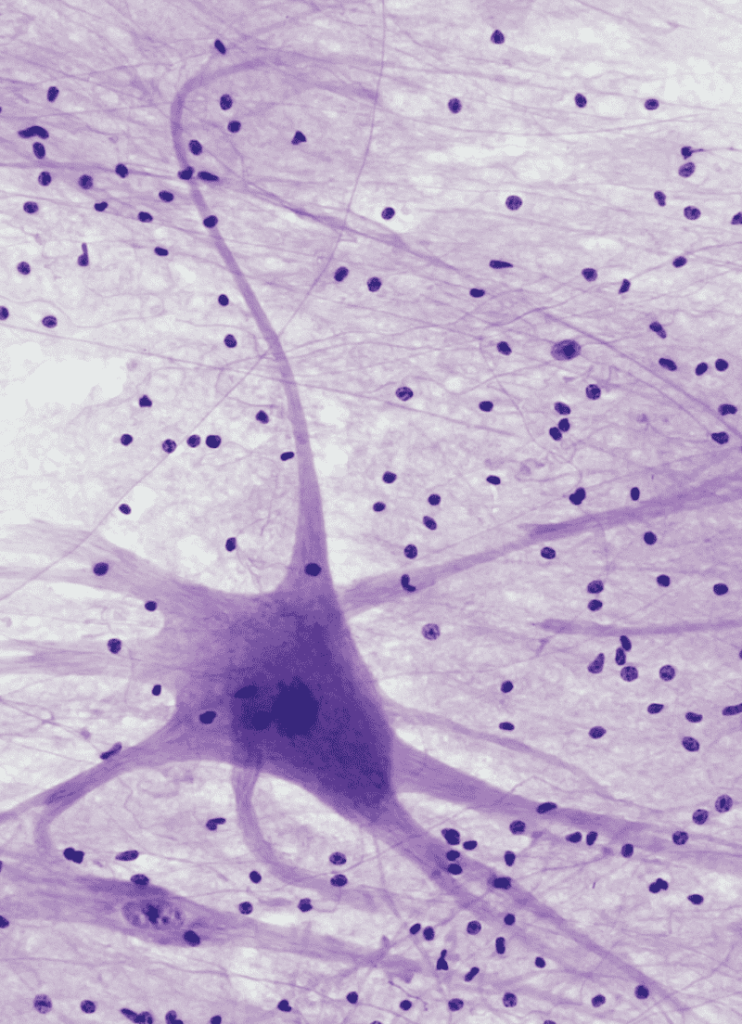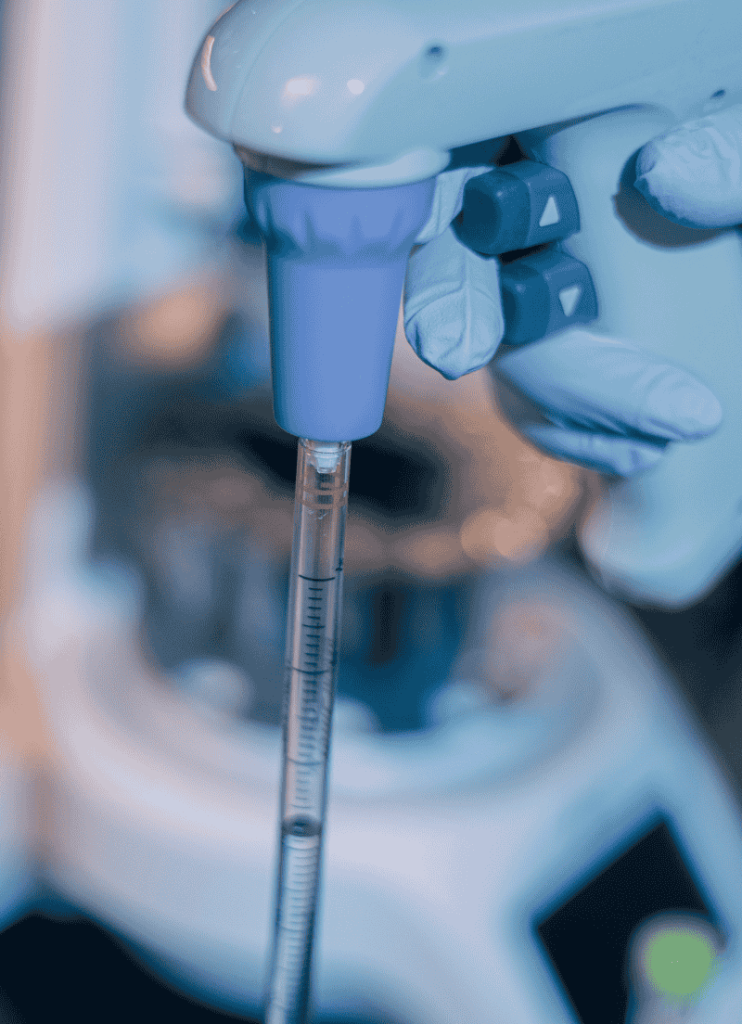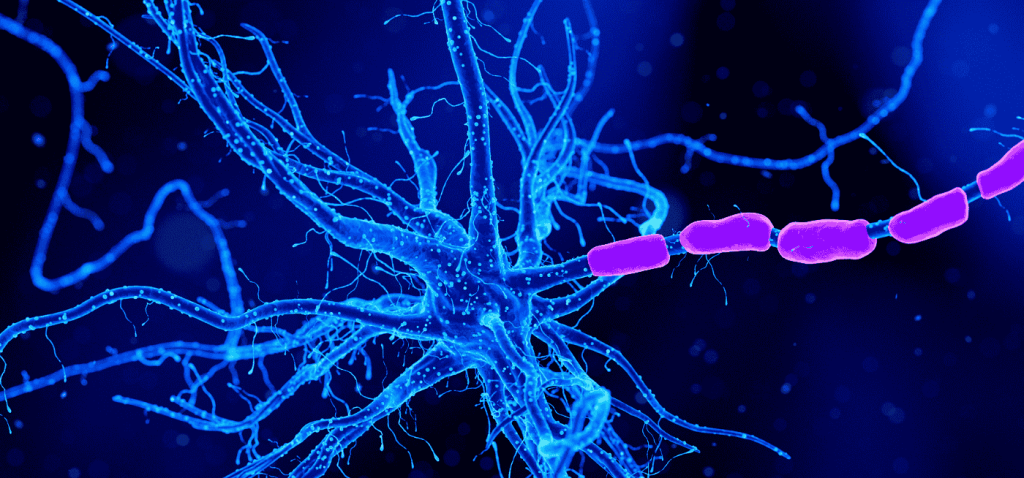Neurodegenerative diseases pose a significant challenge to global health, affecting millions worldwide. Early detection is crucial for effective intervention, making the search for reliable biomarkers more important than ever. Recent research has unveiled exosomes as potential game-changers in this domain.
Exosomes are small extracellular vesicles that play a key role in cellular communication. Their unique composition and biogenic properties enable them to carry critical information about cellular states and processes. This characteristic is particularly valuable in understanding and monitoring neurodegenerative diseases.
In this article, we will explore the role of exosomes in early detection, their advantages as liquid biopsy agents, and the latest advancements in exosome-based technologies. We will also discuss the challenges that remain in this promising field and provide insights into future directions for research and clinical applications.
What Are Exosomes?
Exosomes are small extracellular vesicles, typically ranging from 30 to 200 nanometers in diameter. These vesicles are secreted by almost all cell types, including tumor cells, and play crucial roles in intercellular communication. Due to their capability to carry diverse biomolecules, which include nucleic acids, proteins, and lipids from their parental cells, exosomes provide valuable insights into pathophysiological changes, enhancing their potential as diagnostic biomarkers.
Definition and Composition
Exosomes are defined as tiny, single-membraned organelles that mediate intercellular communication by transporting biomolecules. They originate from the endolysosomal pathway, specifically through the intraluminal budding of multivesicular bodies. Upon release into the extracellular space, exosomal membranes, which feature a phospholipid bilayer, encapsulate proteins, DNA, RNA, and other vital components, making them critical agents in communication. The membranes are enriched with proteins like tetraspanins (CD9, CD63, CD81) and contain nucleic acids such as miRNA and lncRNA, contributing significantly to their functionality.
Biogenic Properties and Their Significance
Exosome formation involves both ESCRT-dependent and ESCRT-independent pathways. Key proteins like flotillin-2 and CD63 contribute to their stability and release. The lipid bilayer, consisting of essential lipids such as cholesterol and sphingolipids, maintains structural integrity and facilitates effective communication between cells. Exosomes’ molecular contents can vary widely based on the originating cell type and physiological conditions, impacting their role in transporting signals. In cancer biology, particularly gliomas, exosomes are key players in cell invasion, immune modulation, and treatment resistance. Thanks to their protective bilayer, exosomes hold significant promise as minimally invasive diagnostic tools in clinical applications.
The Role of Exosomes in Neurodegenerative Diseases
Exosomes derived from neural progenitor cells show promise in treating neurodegenerative diseases by promoting neuronal differentiation and neurogenesis. They play a critical role in intercellular communication within the nervous system, potentially influencing the pathogenesis of diseases like Alzheimer’s and Parkinson’s. The therapeutic potential of exosomes also includes their ability to effectively deliver siRNA, targeting genes involved in these diseases, such as BACE1 in Alzheimer’s.
Research has demonstrated that exosomal delivery systems can significantly improve disease outcomes. For instance, catalase-loaded exosomes can cross the blood-brain barrier, enhancing therapeutic effects in Parkinson’s mouse models. Their presence in bodily fluids with altered contents during disease states positions exosomes as promising diagnostic biomarkers for central nervous system disorders.
Mechanisms of Action
Exosomes form through the endosomal sorting complex required for transport (ESCRT) machinery or ESCRT-independent pathways involving proteins like TSG101 and Alix. Their release is facilitated by multivesicular bodies (MVBs) fusing with the plasma membrane, regulated by GTPase proteins such as Rab27a and Rab27b. These vesicles carry proteins, mRNAs, microRNAs, and lipids that influence physiological processes and intercellular communication.
Furthermore, exosomes can modulate immune responses by transferring bioactive molecules like microRNAs to target cells, potentially activating cell surface receptors. Their release from cell types, including neurons and microglia, is influenced by synaptic activity and neurotransmitters such as serotonin and glutamate.
Types of Neurodegenerative Diseases Affected
Exosomes are crucial in the pathogenesis of neurodegenerative diseases like Alzheimer’s and Parkinson’s by facilitating intercellular communication in the nervous system. Studying these vesicles provides insights into disease mechanisms and potential therapeutic interventions. Exosomes derived from neural progenitor cells or hiPSC-derived neurons can promote neuronal proliferation and neurogenesis, indicating significant therapeutic potential.
Moreover, the unique biomarkers expressed on exosomes released in response to central nervous system diseases make them valuable for diagnostic applications. This diagnostic potential is crucial for early detection and treatment of neurodegenerative diseases, ensuring better patient outcomes.
Exosomes as Liquid Biopsy Agents
Exosomes are small extracellular vesicles released into the bloodstream by cancer cells, making them promising tools for liquid biopsies. They contain diagnostic biomarkers like mutated DNA, proteins, and microRNAs, providing real-time insights into tumor dynamics. With concentrations of about 10^9 particles per milliliter in biological fluids, exosomes are more abundant and easier to collect than circulating tumor cells (CTCs).
Their lipid bilayer composition grants exosomes inherent stability, allowing them to circulate consistently and maintain sample integrity under physiological conditions. This stability enhances the preservation and detection of samples, providing reliable analysis for early cancer detection even before symptoms appear. Nanotechnology advancements have further improved exosome-based biosensors, boosting the sensitivity and accuracy of detecting cancer-associated biomarkers.
Advantages of Non-Invasive Sampling
Exosomes can be collected from almost any body fluid, making them accessible and diverse sources for sampling. This accessibility facilitates non-invasive liquid biopsies, allowing repeated collections to monitor disease progression without discomfort to patients. Advanced isolation techniques like ultracentrifugation provide clear analyses of disease markers, improving the reliability of diagnostic results.
Compared to cell-free DNA (cfDNA), exosomes offer a richer source of biological information, reflecting disease mechanisms more accurately. Their stability at 4°C for 24 hours and at -80°C for longer storage reduces preservation costs and logistical challenges, ensuring consistent and reliable sample analysis.
Disease-Specific Biomarkers in Exosomes
Exosomes carry a diverse range of molecular cargo, including proteins, lipids, and nucleic acids, which are indicative of disease states. These contents change in response to disease, highlighting their potential roles as early-stage diagnostic biomarkers. Detecting specific proteins and nucleic acids through the isolation of exosomes can reveal crucial insights into various diseases.
Exosomes from the central nervous system play a significant role in understanding neurodegenerative diseases. They show altered profiles in conditions like Alzheimer’s and Parkinson’s, underscoring their potential as biomarkers for these diseases. This makes them invaluable for early diagnosis and tracking disease evolution across multiple medical conditions.
Techniques for Isolation and Characterization
Exosome isolation can be performed from various biofluidic samples such as plasma, serum, urine, and cerebrospinal fluid. Techniques like ultracentrifugation, size-exclusion chromatography, and affinity-based capture are commonly used. The choice of isolation method significantly affects the yield and purity of exosomes, making it critical to select appropriate techniques.
Innovative Methods for Exosome Isolation
Isolating exosomes from biofluids such as cell cultures and cerebrospinal fluid can be achieved using ultracentrifugation, size-exclusion chromatography, and tangential flow filtration, among others. Combining these methods can enhance isolation efficiency. Kit-based methods offer convenience but often contain more contaminants than traditional techniques, highlighting the necessity for novel and cost-effective methods in clinical applications.
Characterization Techniques and Their Importance
Characterization techniques like NTA, WB, TEM, and RT-qPCR are crucial for analyzing the properties and compositions of exosomes. These assays aid in their application as diagnostic biomarkers and in drug delivery. Utilizing fluorescent dyes helps visualize exosome structures, while methods like Western blotting or PCR enable biomarker analysis, crucial for disease diagnosis and therapeutic applications.
Advancements in Exosome-Based Technologies
Exosomes are transforming the landscape of diagnostic and therapeutic applications due to their unique properties. Their biocompatibility, high payload capacity, and low immunogenicity make them superior to traditional carriers for drug delivery. This precision in targeting specific recipient cells underscores their promise in early-stage disease diagnostics and targeted therapeutics.
These extracellular vesicles have a crucial role in cancer diagnostics, particularly by serving as a non-invasive liquid biopsy. Tumor-derived exosomes, though minimal in body fluids, harbor unique molecular signatures that enable real-time monitoring and early detection. Standardizing exosome loading methods is essential to enhance their clinical utility and therapeutic effectiveness.
Emerging Technologies in Liquid Biopsy
Liquid biopsy technology has significantly benefited from the role of exosomes in delivering critical biomolecules. Exosomes facilitate protein, lipid, mRNA, and microRNA transport essential for cellular communication, enhancing diagnostic accuracy. The ExoDx Prostate test exemplifies exosome-based diagnostics, offering improved prostate cancer risk assessment independent of traditional PSA levels.
Exosome-based liquid biopsies demonstrate higher sensitivity and specificity than traditional methods like cfDNA and CTCs. The presence of exosomal biomarkers, such as miR-21 and miR-185, offers promise for early cancer detection and other diseases in clinical settings. By being present in all body fluids, exosomes provide a revolutionary, non-invasive diagnostic platform conducive to precision medicine.
Future Directions in Exosome Research
Exosome research is advancing rapidly, focusing on refining detection methods and expanding their diagnostic applications. Their potential in personalized medicine is immense, allowing for treatments tailored to individual molecular profiles and therapeutic responses. Ongoing studies aim to validate the preclinical utility of exosomes as reliable biomarkers, demonstrating their promise for clinical diagnosis.
The versatility of exosomes is evident in emerging therapeutic applications, with numerous drug efficiency studies in early clinical trials yielding promising results. Beyond diagnostics, exosomes are being explored for use in vaccines and cancer imaging, signaling a broad scope for future research and application. The potential of exosomes continues to grow, promising transformative impacts across medicine.
Exosomes in Intercellular Communication
Exosomes are small extracellular vesicles, typically ranging from 30 to 150 nm, that play a critical role in intercellular communication. They carry proteins, nucleic acids, and lipids, effectively transmitting signals between various cell types. Secreted by multivesicular bodies through exocytosis, these vesicles facilitate communication across different cell types and tissues.
Exosome biogenesis involves complex mechanisms, including both ESCRT-dependent and independent pathways. The diverse cargo selection highlights their potential for specificity in delivery. Notably, neural progenitor cell-derived exosomes aid in neurogenesis and differentiation, emphasizing their involvement in nervous system signaling.
Exosomes are able to evade clearance by the mononuclear phagocyte system, granting them a prolonged circulation time. This ability enhances their effectiveness in mediating cell-to-cell interactions, making them invaluable in applications across different biological systems.
Their Role in Cell Signaling
Exosomes are pivotal in mediating cell signaling by transferring signaling molecules such as proteins and nucleic acids to recipient cells. This can modulate various physiological functions, for instance, enhancing GLT1 expression in astrocytes through miRNA transfer. The cell type of origin and physiological state influence the exosomal cargo, subsequently impacting gene expression and cellular processes like proliferation and differentiation.
Immune cell-derived exosomes uniquely activate or inactivate T-cells, affecting immune signaling pathways and cellular responses. Exosomes guide cellular responses critical for tissue regeneration and maintenance, thereby playing a crucial role in environments such as the nervous system.
Impact on Immune Responses
Exosomes derived from immune cells enhance immune responses and can alter the immune environment in diseases. For example, those from Toxoplasma Gondii-treated macrophages increase IL-12, TNF-α, and IFN-γ production while reducing IL-10 levels. This modulation indicates active participation in immune activation.
Conversely, tumor-derived exosomes can create an immunosuppressive microenvironment, aiding in immune escape and potential metastasis development. Exosomal PD-L1 levels serve as predictors for anti-PD-1 therapy success, highlighting their potential as diagnostic biomarkers. Glioblastoma-derived exosomes further showcase their role in promoting immune tolerance and chemotherapy resistance, illustrating their significant impact on immune response dynamics in tumor progression.
Clinical Implications of Exosomes
Exosomes play a critical role in diagnostic applications because they carry specific molecular cargo reflecting their parental cells. This ability to transport protein biomarkers makes them promising candidates for early-stage disease diagnostics. They encapsulate a heterogeneous mixture of proteins, lipids, and nucleic acids that deliver precise information about disease states, thus serving as valuable diagnostic and prognostic biomarkers.
Standardizing methodologies for exosome isolation and characterization remains a major challenge. Such standardization is crucial to achieving reproducible results in clinical applications. Nonetheless, the potential of exosomes extends beyond diagnostics; they show promise as natural vehicles for targeted gene or drug delivery systems, enabling innovative therapeutic strategies.
Early Diagnosis through Exosome Analysis
Exosomal biomarkers offer the potential to indicate disease presence at early stages, facilitating timely medical intervention. These biomarkers are especially valuable in diagnosing neurodegenerative diseases and various cancers. Exosome isolation is a non-invasive diagnostic method, reducing patient discomfort and supporting early diagnosis feasibility.
Exosomes can cross the blood-brain barrier, making them ideal for diagnosing central nervous system (CNS) disorders. Moreover, cancer-related exosomes carry specific cargoes that reflect tumor conditions, aiding in both diagnostic and prognostic evaluations. Additionally, maternal circulating exosomal miRNAs, like phosphodiesterases (PDEs), are promising for early detection of pregnancy disorders, such as gestational diabetes.
Personalized Therapeutic Strategies
In personalized medicine, exosomes are expected to play a crucial role due to their potential to facilitate targeted therapeutic approaches for conditions like cancer and neurodegenerative diseases. By identifying cancer-specific protein signatures within exosomes, more personalized and precise treatment strategies can be developed.
Exosomal PD-L1 is an emerging predictor for anti-PD-1 therapy efficacy in melanoma and NSCLC, indicating a shift towards personalized immunotherapy. Additionally, exosomes can guide cellular responses necessary for tissue repair, which is promising for personalized therapeutic strategies in neurological disorders. Research aimed at optimizing exosome isolation and purification could significantly enhance their role in personalized diagnostics and biomarker discovery.
Challenges and Limitations
Exosomes are fragile and prone to degradation under extreme temperatures or mechanical stress. Maintaining proper storage and transportation conditions is crucial to preserving their integrity and functionality. These vesicles face significant biological barriers, like the blood-brain barrier, which can impede their distribution and efficacy in vivo.
Despite advances, handling exosomes remains challenging due to their interactions within complex biological environments. Their journey through the circulatory system involves overcoming cellular barriers, essential for therapeutic potential. Research is focusing on optimizing drug delivery, but innovative techniques are needed to improve their cargo capacity.
Current Research Gaps
There is a pressing need for comparative analyses of exosome isolation methods. The chosen technique significantly affects the yield and purity of isolated exosomes, which impacts biomarker study reliability. The quality of the starting sample, influenced by factors like hemolysis, also plays a critical role in yield and accuracy.
Exosomal proteomics faces challenges due to variations in isolation methods, hindering comparative studies on biomarkers. The complexity of exosomes’ diverse molecular cargo complicates consistent drug loading for therapeutic applications. Understanding exosome engineering is essential to target specific diseases effectively while minimizing off-target effects.


Future Research Directions
Future research should elucidate the exact mechanisms of exosome biogenesis. Understanding these processes fully could enhance their application as diagnostic biomarkers and therapeutic targets in diseases like cancer and autoimmune disorders. Investigation into exosomes’ roles in neurodegenerative diseases could open new therapeutic avenues.
Engineering exosomes for drug delivery highlights the need for innovative therapeutic applications. Research into exosomes’ unique molecular profiles could pave the way for personalized medicine approaches, offering disease-specific treatments. Comprehensive studies are necessary to realize exosomes’ potential in diagnostic and therapeutic contexts fully.




